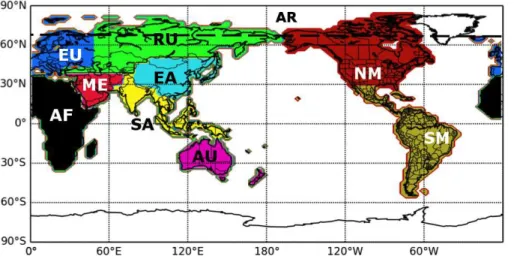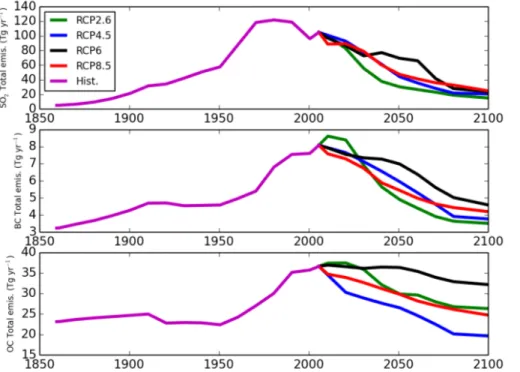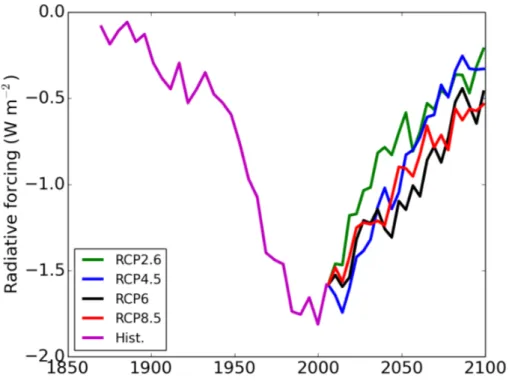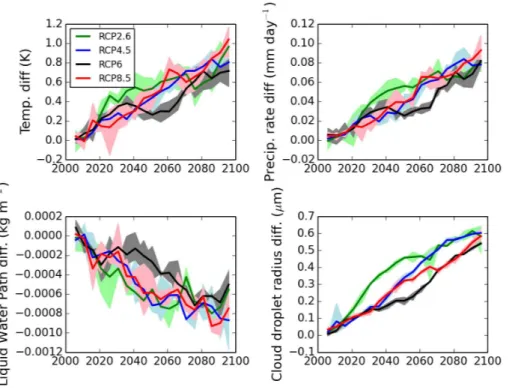Radiative forcing and climate response to projected 21st century aerosol decreases
Texto
Imagem


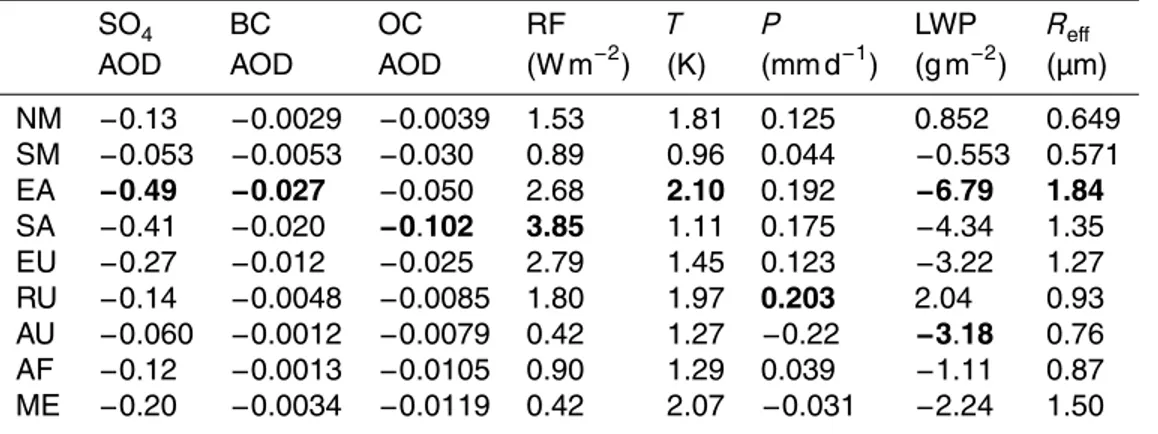

Documentos relacionados
(2003), in our study the effects of natural processes (in the SFIX sim- ulation) includes also changes in emissions of CO, NO x , and VOCs from biomass burning and lightning
We perturb aerosol and meteorological properties within an observationally-constrained LES and determine the cloud response, focusing on changes in liquid water path (LWP), bulk
The e ff ects of seasonality of BBCA on aerosol direct radiative forcing (DRF) and on climate are isolated by comparing the results of two runs, in either o ffl ine or online set,
The model has been used to study the impact of aerosol direct radiative e ff ect on East Asian climate (Zhang et al., 2012a), direct radiative forcing of anthropogenic aerosols (Bond
Relationship between aerosol number concentration and cloud droplet number concen- tration (CDNC) with (a) showing that the volcanically induced cloud albedo e ff ect is larger
To calculate radiative forcing and quantify the impact of varying sources of uncertainty, we need data including aerosol amount (e.g. optical depth) in both the present day and
Here we assess the aerosol optical depth ( τ ), direct radiative effect (DRE) by natural and anthropogenic aerosols, and direct climate forcing (DCF) by anthropogenic aerosols,
Here we investigated the relationship between forcing and climate response for fires using a global Earth system model that included direct and semi-direct aerosol e ff ects.. In
